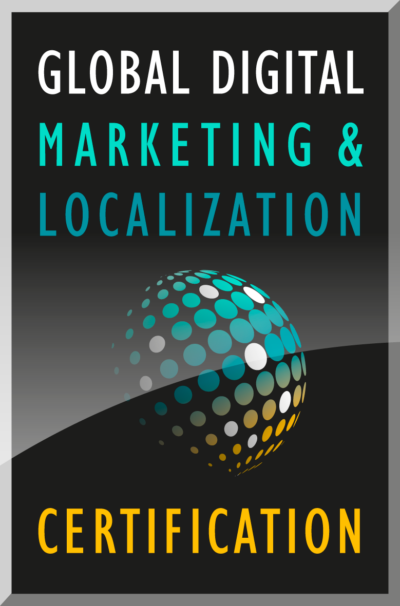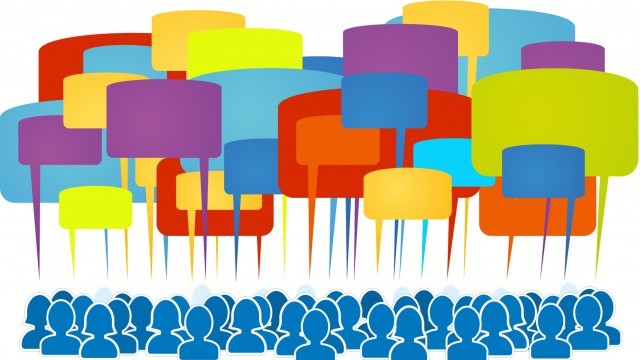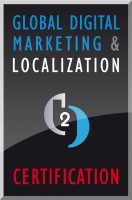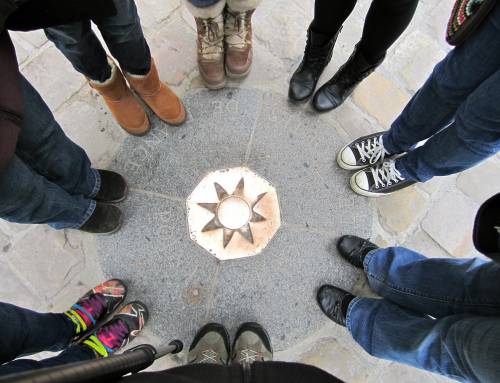This is the final paper presented by Kathy Vanichkorn, a recent graduate of the Global Digital Marketing and Localization Certification (GDMLC) program. This paper presents the work being produced by students of The Localization Institute’s Global Digital Marketing and Localization Certificate program. The contents of this Paper are presented to create discussion in the global marketing industry on this topic; the contents of this paper are not to be considered an adopted standard of any kind. This does not represent the official position of Brand2Global Conference, The Localization Institute, or the author’s organization.
Crowds – the community – have power to make things happen. The translation crowd usually consists of multilingual users who are fans of your products or services including customers, partners and colleagues. They can be our valuable resource in localization increasing the demand of multilingual content and opportunity to expand the global market spaces. Crowdsourcing is becoming more popular and has been adopted by companies allowing them to improve their production capacity while keeping the costs low. While it is definitely a feasible production model for localization services however there are some considerable challenges that most companies have faced including linguistic quality – the most known issue in the localization space. It may be safe to say that the linguistic quality in crowdsourcing is “sufficient” for the community. While some believe that the community do produce better quality than the professional translators (or localization vendors) because they know the subject matter much better.
Many companies including Facebook, Twitter and LinkedIn have been crowdsourcing their translations extensively in the past years. Not to be mistaken for machine translation (MT), translation crowdsourcing is human translation that use a self-service crowdsourcing technology to link translators and customers. Translators can be your customers, partners and colleagues who are familiar with the products or services. Currently, there are many self-service crowdsourcing technologies offering in the marketing such as Smartling, Transifiex, OneSky, Get Localization and Ackuna Cloud Translator.
Here are some examples of companies leveraging translation crowdsourcing:
- Facebook has an app for translation called Translate Facebook App and it has used this app successfully to crowdsource translation of Facebook’s site in 70-plus languages. The community can translate text, vote for the best translation or add their own translation. The translated text with maximum vote counts get accepted and use on the live sites. Anyone who wants to bring their languages to Facebook or improve the current translations on Facebook can become a translator. Translators can earn badges for their published translations and for the votes those translations get. Translations will also be featured on the translation community leaderboard. Every language has its own translations community which is an open group that translators can join. Group have a forum to discuss linguistic questions, report translation errors and ask for support from other translators. Facebook also aims at leveraging its volunteer translators on other sites or apps by using a set of APIs from Facebook called Facebook Connect. Any website or application that uses Facebook Connect can now open up their translation project to the entire Facebook community to get their site translated in any language that Facebook supports.
- Twitter launched its Twitter Translation Center in 2011 in an effort to turn its users into volunteer translators who will help expanding their social media company’s products into new languages. Translators will be translating the product itself including all Twitter platforms (mobile, website, app and help), not the Tweets. The volunteer translators then agree on the best possible translation. As a reward, once the volunteer translators rank among the top 20% on their language’s translators, they will get a Translator badge which represents the fact that a user is a Twitter Translator. The badge will remain featured on their Twitter profile as long as they remain in the position. Only approved votes and translations are counted towards a translator’s rank. Twitter encourages the volunteer translators to submit and vote for high quality translations in order to maintain their rank. Currently, more than 50 languages are supported by the volunteer translators.
One advantage to translation crowdsourcing is the sheer number of eyes looking at the translations. However, many untrained eyes may not catch errors that used to be seen by professional translators. In other words, translation crowdsourcing often skips the quality control offered by professional translators including their linguistic skill and the review process. Translation crowdsourcing is all about cooperation. Most companies have setup different roles for each translation team such as moderators, language lead and translators. These people work together with the community to produce translations. One thing to keep in mind is that it always works in both directions: the community gives you translations, you give them something back.
Here are few recommendations:
Before starting a translation crowdsourcing project, make sure that enough study about the platform/tool for translation have considered in advance. Crowdsourced translations can provide lower quality than professional, yes, most likely that is true but the companies cannot expect good quality translations if they do not provide the community with the right tools to the community. For example, Smartling offers a crowd dashboard by providing the translation memory system software to recruit, train and engage with the volunteer translators. They can track the progress of the project and get a notification when the new strings are available for translations. They can also translate content in context, search for specific URLs and view most active volunteer translators in the leaderboard. These Smartling’s features make the translation process manageable for both project owners and volunteer translators. Quality can be improved extensively with Smartling’s contextual interface. For strings without context, the project owners can customer the translation workflow for the review process to include any combination of professional translators or trusted internal resource such as moderators or the company’s subsidiaries.
Defining the goals of translation crowdsourcing is recommended. The project owner needs to establish clear communication with the community by defining the problems statements and set expectation to the crowd contributors. This can be done through a forum or the main introductory web page. For every new feature release, give the volunteer translators enough information about the translatable materials, explain how the feature works and to which features specific strings belong. This information can be included in the string level of the translation platform/tool (if the tool has this functionality available). Monitoring the Q&As from the volunteer translations is a must. Remember that the faster you respond, the sooner they can finish translations for your project, and that they know the project is important.
When the project is divided into amongst a number of volunteer translators, it will be more difficult to maintain the translation consistency across projects. Terminology and style guide will come in handy to solve this issue.
- First, the project owner will work with the product manager or someone in Marketing team to help defining the key terms and their definitions. These terms are associated with a feature or new concepts rather than just a feature names or terms that use for branding. Some of the terms will need to be reviewed and approved by the Legal team as there are risks involved with exposing Intellectual Property in some countries. Once the key terms are defined, they should be translated at the very beginning of the project by the trusted resources such as moderators or the company’s subsidiaries. Once translations are agreed and approved by all parties, they should be published as part your project’s dashboard or forum. They must be visible and accessible to all volunteer translators. Some crowd tools do offer the Terminology or Glossary feature. For example, Transifex offers Glossary feature which helps to standardize the way terms are translated. This help increasing the consistency and quality of the translations when multiple volunteer translators collaborate on a project. Once terms are defined in the glossary, it will be highlight in the Web Editor and tooltip visible to everyone who works on the project.
- Second, the project owner should invest time in creating a style guide. Companies and brands are considering content to be team-wide effort. Consistency and brand messaging are important key element to help deliver quality translations. The style guide will guide the team on how to write for your global audiences and keep tone, voice, messaging consistent. It covers aspect such as grammar, language, formatting and tone. This can be an open-ended exercise it grows as far as needed. It is also something the company can offer to their clients as a service.
Linguistic Review may be conducted every once in a while, monthly or quarterly basis. This step can be done through moderators, trusted resources or professional reviewers (vendors). This step will help companies maintaining translation quality and keep things consistent across. It is absolutely fine to engage with a localization vendor for this specific service. Note that there will be some cost associated to this depending on the volume (total word count) if engaged through vendors.
In general, the quality of translation crowdsourcing is acceptable as it does not automatically result in good quality. There are some challenges but it is possible to overcome them. It improves scalability in term of speed. It also allows companies to save money while engaging with customers and professionals in the network but at the same time companies must invest time and resources to find the right tools and talents with a recognition program. The most ideal thing is to have good planning and crowdsourcing in place. Once everything is in place, it will be easy bring fun to the volunteers especially for a product or service they love.
References:
Translate Facebook App: https://www.facebook.com/help/100117036792266
Facebook Connect: https://developers.facebook.com/docs/javascript/advanced-setup
Twitter Translation Center: https://blog.twitter.com/2011/translating-twitter-into-more-languages
Smartling: https://www.smartling.com/
Transifex Glossary: http://docs.transifex.com/features/glossary/
Copyright © 2016 The Localization Institute. All rights reserved. This document and translations of it may be copied and furnished to others, and derivative works that comment on or otherwise explain it or assist in its implementation may be prepared, copied, published, and distributed, in whole or in part, without restriction of any kind, provided that the above copyright notice and this section are included on all such copies and derivative works. However, this document itself may not be modified in any way, including by removing the copyright notice or references to The Localization Institute, without the permission of the copyright owners. This document and the information contained herein is provided on an “AS IS” basis and THE LOCALIZATION INSTITIUTE DISCLAIMS ALL WARRANTIES, EXPRESS OR IMPLIED, INCLUDING BUT NOT LIMITED TO ANY WARRANTY THAT THE USE OF THE INFORMATION HEREIN WILL NOT INFRINGE ANY OWNERSHIP RIGHTS OR ANY IMPLIED WARRANTIES OF MERCHANTABILITY OR FITNESS FOR A PARTICULAR PURPOSE.
Author Bio:
Kathy Vanichkorn has been working in the localization industry for the past 14 years, both vendor and client sides. She has experienced working for companies in the Life Science, Pharmaceutical, IT (software, hardware and mobile) and Gaming fields. Her various roles include: Operations Management, Vendor Management, Localization Program Management and Global Team Management. She has demonstrated success in managing the full project life cycles and possess a deep understanding of how to utilize technology in order to deliver enterprise solutions that meet requirements of business.
Connect with Kathy on Linkedin:View Profile










